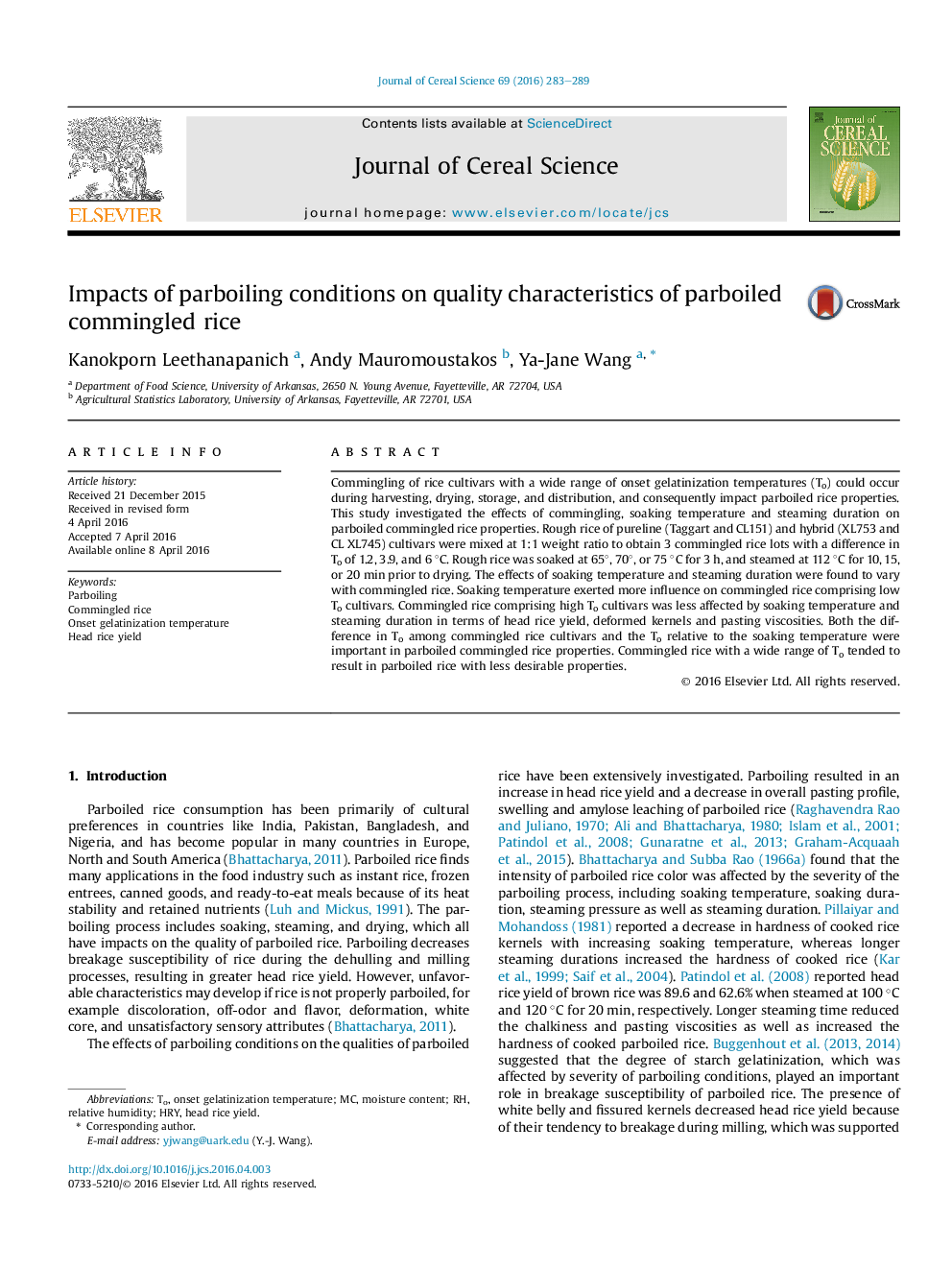| Article ID | Journal | Published Year | Pages | File Type |
|---|---|---|---|---|
| 4515595 | Journal of Cereal Science | 2016 | 7 Pages |
•Commingled rice may cause inconsistent properties in parboiled rice.•Commingled rice tended to result in parboiled rice with less desirable properties.•Steaming reduced the difference in breakage susceptibility of commingled rice.
Commingling of rice cultivars with a wide range of onset gelatinization temperatures (To) could occur during harvesting, drying, storage, and distribution, and consequently impact parboiled rice properties. This study investigated the effects of commingling, soaking temperature and steaming duration on parboiled commingled rice properties. Rough rice of pureline (Taggart and CL151) and hybrid (XL753 and CL XL745) cultivars were mixed at 1:1 weight ratio to obtain 3 commingled rice lots with a difference in To of 1.2, 3.9, and 6 °C. Rough rice was soaked at 65°, 70°, or 75 °C for 3 h, and steamed at 112 °C for 10, 15, or 20 min prior to drying. The effects of soaking temperature and steaming duration were found to vary with commingled rice. Soaking temperature exerted more influence on commingled rice comprising low To cultivars. Commingled rice comprising high To cultivars was less affected by soaking temperature and steaming duration in terms of head rice yield, deformed kernels and pasting viscosities. Both the difference in To among commingled rice cultivars and the To relative to the soaking temperature were important in parboiled commingled rice properties. Commingled rice with a wide range of To tended to result in parboiled rice with less desirable properties.
